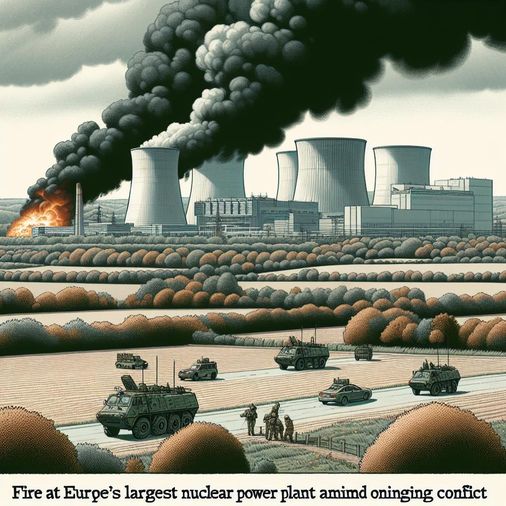Fire at Europe's Largest Nuclear Power Plant Extinguished Amid Ongoing Conflict

The fire at Europe's largest nuclear power plant, located in the Zaporizhzhia region of Ukraine, has been completely extinguished as of early Monday morning. This update was provided by Vladimir Rogov, an official from the Russian-installed administration in the partially occupied Zaporizhzhia region. Rogov reported via the messaging service Telegram that the fire, which broke out in a cooling unit, was the result of an attack by the Ukrainian army.
Rogov confirmed, "The fire is completely extinguished." Since the onset of the war in 2022, both Ukraine and Russia have accused each other of shelling the nuclear power plant, raising concerns about a potential nuclear disaster in central Europe.
Yevgeny Balitsky, the governor of the Zaporizhzhia region appointed by Russia, shared details on Sunday evening through Telegram, indicating that the fire in the cooling system was caused by the shelling of the city of Enerhodar by Ukrainian armed forces. He reported, "As a result of shelling, there was a fire in a cooling system."
However, Balitsky also reassured the public that no changes in radiation levels around the nuclear power plant have been registered. He stated that there is no risk of a steam explosion or any other serious consequences stemming from the fire.
Simultaneously, the Russian management of the nuclear power plant reported that the fire had not affected the overall safety of the facility. This assertion was backed by a report from Reuters, which mentioned that experts from the International Atomic Energy Agency (IAEA) had observed thick dark smoke rising from the northern part of the nuclear power plant during their assessment.
On Sunday evening, the IAEA took to social media platform X to inform the public that they had received reports of a drone attack on one of the cooling towers on site. Thankfully, they emphasized that no impact on nuclear safety has been recorded. The situation remains tense as both nations continue to navigate the complexities of the conflict while addressing the inherent risks associated with nuclear energy in a war zone.
Related Sources:
